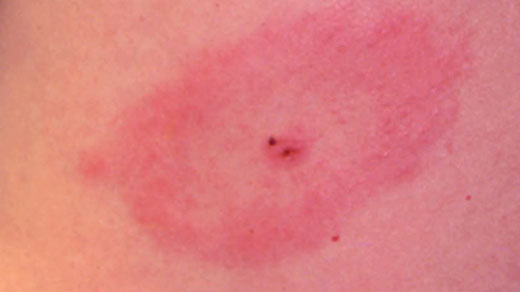

Generally, wood ticks are found in California and other areas east of the Rocky Mountains. They usually have dark brown bodies with either a gray pattern or white scutum. Wood ticks are commonly known as American dog ticks. If you develop any symptoms of Lyme disease, you can bring the tick with you to your doctor. Next, put the tick in a bag or container, then freeze it. If bitten, follow CDC recommendations on tick removal. Other conditions spread by deer ticks include babesiosis, anaplasmosis, and Powassan virus. You are more likely to get Lyme disease from an adult tick, as these ticks have fed two more times than larvae. Yes, deer ticks are often known for spreading Lyme disease! They feed on infected hosts and then spread the condition elsewhere.

They usually begin biting during winter or early spring.ĭeer ticks host a variety of bacteria and diseases. However, they can also be found in North and South Dakota, Texas, and Colorado. Sourced from PeakPX.ĭeer ticks are commonly found along the east coast. So if you’ve been outside and suddenly notice that you have a little poppyseed on your arm, it may be time to take a closer look. They are extremely small and much harder to notice than other ticks. These tiny, hard ticks also have a reddish-orange body and black scutum. Deer Tickĭeer ticks are also commonly known as blacklegged ticks because of their (surprise!) black legs. As a result, it is important to understand the differences between the ticks so you can best pursue a treatment plan following a bite. The CDC notes that reported cases of tick-borne illnesses have rapidly climbed over the past few years. However, it can be treated with antibiotics. Learn more about Lyme disease. If untreated for longer, Lyme disease can result in nerve pain, brain and spinal cord inflammation, heart palpitations, dizziness, body rashes, severe headaches, facial palsy, joint swelling, and muscle, joint, and bone pain. It has a “bulls-eye” appearance, with a distinct inner circle (the bite). Not every person will get this rash, but about 80% do. These include fever and chills, fatigue, joint and muscle pain, headache, swollen lymph nodes, and an erythema migrans rash. Initial symptoms appear anywhere from 3-30 days post-infection. Symptoms of Lyme disease worsen over time. Generally, a tick must be attached for 36-48 hours before Lyme disease transmission. However, they tend to like darker, more secluded areas like the armpits or the groin. Ticks can bite and attach to the body in multiple places. Lyme disease is caused by Borrelia burgdorferi bacteria, transmitted through infected tick bites. Take a look at this overview of the two most common ticks to see which one exposes you to which conditions. But getting bitten exposes you to potential diseases, from Lyme disease and babesiosis to Rocky Mountain spotted fever. So even while we’re still social-distancing, ticks are getting ready to show off their summer bodies. As Preventionreminds us, tick season is officially upon us! That’s right, these little pests enjoy warm and humid weather.


 0 kommentar(er)
0 kommentar(er)
